Looking for some inspired DIY holiday treats and gift ideas? You landed on the right blog!
My partners at Delicious Living have put together these wonderful holiday DIY gift and treat ideas for YOU!
Let’s get started! 🙂
First up: Gingersnap and Raspberry Jam Sandwich Cookies
First, find the link to the original recipe/article here! (credit for recipe and all images :))
This recipe is from Myra Goodman’s first cookbook, Food to Live By and was provided to Delicious Living for reprint. Myra says the cookies are even more outrageously good with jam. You can also add peanut butter to one side and make peanut butter and jelly sandwich cookies. Here is Myra Goodman on this inventive holiday cookie recipe:
I invented this gingersnap recipe 28 years ago during our first year on the farm. My husband ate them so fast that I started to have them professionally made for our farm stand; we decided to share the recipe in my first cookbook, Food to Live By (Workman, 2006). They’re even more outrageously good with jam. You can also add peanut butter to one side and make delicious peanut butter and jelly sandwich cookies.
Ingredients:
- 12 tablespoons (1½ sticks) unsalted butter, softened
- 1½ cups natural cane sugar, divided
- 1 large egg
- ¼ cup molasses
- 2 cups whole-wheat pastry flour
- 2 teaspoons ground ginger
- 1 teaspoon ground cinnamon
- 2 teaspoons baking soda
- ½ teaspoon salt
- 1 cup Homemade Raspberry Jam (or use your favorite store-bought variety – try to use fruit-sweetened only!)
Directions:
- Position rack in center of oven and preheat to 350˚. Place butter and 1 cup sugar in a medium mixing bowl. Beat with an electric mixer at medium speed until smooth, 2–3 minutes. Add egg and molasses and beat until combined, about 1 minute.
- Whisk together flour, ginger, cinnamon, baking soda, and salt in a bowl. With mixer on low speed, slowly add flour mixture to butter mixture; beat until smooth.
- Roll pieces of dough between your palms to form small balls. Lightly roll balls in remaining ½ cup sugar. Arrange 12 balls on baking sheets, 1 inch apart; then press each cookie ball down with your finger until about ¼-inch thick. Bake until fragrant and cracks appear on top, 8–12 minutes.
- Transfer baking sheets to a wire rack to cool for 5 minutes. Then, using a spatula, remove cookies to rack to finish cooling.
- To make sandwich cookies, put 2 teaspoons raspberry jam in the middle of bottom side of one cookie; then cover it with a second cookie, back side facing jam, and press lightly. Assemble only as many as you will eat in a few hours because the jam’s moisture makes the cookies lose their crisp texture. Dry cookies will keep in an airtight container for 1 month.
PER COOKIE: 153 cal, 6g fat (2g mono, 0g poly, 4g sat), 22mg chol, 1g protein, 26g carb, 0g fiber, 158mg sodium
Next up, Chocolate Peppermint Sandwiches! Oh my!
Makes 12 / If you’re not keen on cold treats, the chocolate cookies are delicious on their own. Preparation tip: Substitute mint chocolate chip or mocha frozen yogurt or ice cream, if you prefer. You’ll have lots left over to enjoy with another dessert.
1 cup whole-wheat pastry flour
1/2 cup unsweetened cocoa
1/4 teaspoon baking soda
1/4 teaspoon ground cinnamon
1/2 cup brown sugar
1/2 cup natural cane sugar
4 tablespoons unsalted butter
2 tablespoons unsweetened applesauce
1 teaspoon vanilla extract
1 egg
1 pint fat-free vanilla frozen yogurt
1/2 cup crushed all-natural peppermint candies, divided
1. In a medium bowl, combine flour, cocoa, baking soda, and cinnamon. Set aside. In a large bowl, blend sugars and butter until fluffy. Add applesauce, vanilla extract, and egg. Once thoroughly combined, blend in flour mixture. Transfer dough to one end of a large sheet of waxed paper. Fold paper over dough; wrap completely, rolling dough into a 12-inch log. Freeze for 1–2 hours.
2. Preheat oven to 350°. Coat a baking sheet with cooking spray. Unwrap dough and slice crosswise into 24 cookies. Bake 12 at a time for 10–12 minutes until firm to the touch. Transfer cookies to a wire rack to cool.
3. While cookies are cooling, remove frozen yogurt from freezer to soften. Stir in 1/4 cup crushed peppermint candies. Place remaining 1/4 cup crushed candies in a shallow dish. Place 1–2 tablespoons frozen yogurt on the flat side of one cookie. Place another cookie (flat side down) on top and gently push together. Roll edges lightly in crushed candies. Repeat with remaining cookies. Wrap sandwiches individually in plastic wrap and freeze until firm, 2–4 hours.
PER SERVING (1 sandwich): 195 cal, 23% fat cal, 5g fat, 3g sat fat, 28mg chol, 3g protein, 36g
Here’s the link to the original recipe! http://deliciousliving.com/frozen-chocolate-and-peppermint-sandwiches
And finally, here is a DIY holiday gift idea! Sweet Dreams Holiday Bath Bags!
This blend of relaxing herbs and skin-soothing oats is the perfect antidote to holiday-time stress. Just drop a bag into the tub, and mind and body will steep! Tip: Head to your natural retailer’s bulk department, and have fun mixing and matching dried herbs and teas.
Ingredients:
- Cotton muslin
- 1/4 cup dried (chamomile)
- 1/4 cup coarse-ground rolled oats
- 10 drops rose essential oil
- Jute twine
Directions:
Cut muslin into five 6-inch squares. Mix chamomile, lavender and oats in a medium bowl. Add 10 drops essential oil to the dry mix. Scoop a spoonful into the center of each muslin square. Bring all corners together, and secure tightly with jute twine. Gift in a festive mug.
Here is the link to the original DIY gift idea (credit goes to image as well): https://goo.gl/vfmR5V
Looking for even more awesome holiday recipe ideas including some main dishes? Click here!
Wishing you the very happiest of holiday seasons ever! Remember, enjoying and living life to the fullest is an essential part of well-being! Seeking even more awesome, free content to enhance your health and well-being and happiness? Click below or to your right to join my exclusive email list for free, quality ideas and content to enhance your life on ALL levels! See you on the inside!
High-quality, real food and supplements offered by the natural foods industry changed my life. I am very sensitive to artificial ingredients, GMO’s, fillers, and low-quality ingredients (did you know if you are sensitive to something, it can create inflammation in the body – a big no-no!).
When I developed chronic fatigue, I turned to the natural foods industry to seek answers. I began working in the supplements department of a natural foods store, and taking high-quality supplements (I’ve tried hundreds of them to find which ones work for me), and by learning how to eat well, I improved my energy levels and well-being significantly. You can read more about my journey here and in my book, The Memory of Health (see link below).
I cannot take prescription drugs, so for me, having access to high-quality supplements was a game-changer.
In my quest for answers to my health challenges and well-being, I became a Conscious Consumer.
I take them every day, and they make a BIG difference in the quality of my life and well-being. I discuss supplements in great detail in my book, The Memory of Health.
You can find my book here!
How to Become a More Mindful Eater
Author: Lisa Truesdale
Eating more mindfully is an important step in becoming healthier. It might even help you shed stubborn pounds. Check out five easy ways to practice—whether you’re at home, a restaurant or an office function.
Eating more mindfully is an important step in becoming healthier, perhaps even helping you shed stubborn pounds. Below, Susan Albers, PsyD, clinical psychologist at the Cleveland Clinic in Ohio and author of Eating Mindfully (New Harbinger, 2012) details her 5S system, which is not only free but also portable.
“You can use these skills everywhere, whether you’re at a party, restaurant or office function,” she says.
1. Sit down.
Research shows people eat more when standing, which is why you should sit at a table. (And, no, a couch doesn’t cut it.) The table will help you pay greater attention to your food.
2. Slowly chew.
The longer you take to chew, the more you’ll taste and enjoy food. Besides, you’ll naturally slow your eating. Another way to quell quick eating? Eat with your non-dominant hand, which research shows will slow you by about 30 percent.
3. Savor.
As you eat, notice the texture, taste and smell of your food, something most people don’t do. By doing this, you’ll make wiser decisions about whether to keep eating.
4. Simplify the environment.
Research from the Cornell University Food & Brand Lab shows that creating a more mindful environment can help you eat less. For instance, because people tend to eat more in cluttered kitchens, keep your eating space clean. You’re also more likely to make healthier choices if good-for-you foods are visible, so place only healthy foods on kitchen counters and store produce at eye level in the fridge.
5. Smile between bites.
“That smile creates a gap moment, during which you can decide if you want to eat more,” Albers says.
Here is the original link for this article and the image associated with the above article: http://goo.gl/mnN5pQ
Interested in more on living mindfully? Read on for more great tips on how to master this effective practice …
How to Master the Art of Mindfulness
Author: Karen Asp
Summary: Rather than going through the day on autopilot, start tuning in and becoming more curious about life so you can reap the ultimate reward: greater happiness.
Mindfulness is a term that gets tossed around a lot these days. So much, in fact, that you might not pay it much, well, mind.
Turns out, though, being more mindful can significantly impact your life, improving everything from your career and relationships to your health. “Mindfulness is the key to happiness,” says Judson Brewer, MD, PhD, associate professor of medicine and psychiatry at University of Massachusetts Medical School (UMMS) and director of research at the UMMS Center for Mindfulness in Shrewsbury, Massachusetts.
Sound too good to be true? Not when you understand the science behind mindfulness. Here’s the best part about mindfulness, though: Although Buddhist monks have been practicing it for centuries, it doesn’t take a retreat to a monastery to learn how to do it. Practice helps, of course, but being more mindful is something you can start doing right now.
What does it mean to be mindful?
Mindfulness might be a mouthful to pronounce, but by definition, it’s a basic concept. “It’s about being present in the moment in a nonjudgmental way,” says Susan Albers, PsyD, clinical psychologist at the Cleveland Clinic in Ohio and author of Eating Mindfully (New Harbinger, 2012). You’re basically taking yourself off autopilot—do you even remember going to work or what you ate for lunch?—and getting in tune with your feelings and thoughts, which will help you make better decisions. You’re not getting pushed or pulled in one direction or another, instead just resting in awareness and being with whatever is, Brewer adds.
Easy, right? In theory, yes, but, unless you’re a child, it can be challenging at first. Kids are born with a natural curiosity about the world, which breeds mindfulness. “When you’re curious, you have a single-minded focus on whatever you’re curious about,” Brewer says.
Unfortunately, though, you lose that curiosity as you age. “Your adult mind thinks it knows how everything works, so instead of being curious, your mind sits around and looks for something to do,” Brewer says. As a result, you might start regretting things you’ve done in the past or worrying about things you need to do in the future, all of which equates with mind-wandering. Because your brain is designed to learn, the more it’s rewarded for mind-wandering (such as when you dream of being on vacation) the more it starts to do it.
How much your mind wanders may surprise you. Most people spend almost 50 percent of their waking hours mind- wandering, or thinking about something other than what they’re supposed to be focused on, according to a Harvard University study of more than 2,000 people ages 18 to 88. The unexpected consequence? Mind-wandering made most people unhappy, which is why researchers concluded that a wandering mind is an unhappy one.
When you become more mindful, however, changes take place in your brain, as Brewer has proven in imaging studies on the brains of people who meditate and those who don’t. “Being in the moment deactivates a part of the brain called the default mode network (DMN), a region that’s involved with daydreaming,” he says. When the DMN gets switched off, the brain is better able to focus.
The benefits of becoming more mindful
It’s well established that less mental wandering leads to greater happiness, which is the ultimate benefit of mindfulness. Yet how exactly does mindfulness get you there? Numerous physical and psychological benefits contribute to that happier countenance.
Start with the control you’ll gain over your life, especially when it comes to food, which may impact your weight and, thus, your health. “Mindfulness can help you eat healthier and cope with cravings better,” Albers says. (Mindfulness has also been shown to help smokers quell nicotine cravings, Brewer adds.) How many times during the day, after all, have you scarfed down food without paying attention to what you’re eating or if you’re even hungry, for that matter? Maybe you’re eating in front of the TV, and before you know it, you’ve demolished a bag of chips. “Without mindfulness, you’re often making unconscious choices based on habits,” adds Albers.
One solution, then, to weight loss might simply be paying more attention to food. A study from the International Journal of Behavioral Medicine revealed that people who were more aware of and paid more attention to their thoughts and feelings had less abdominal fat and were less likely to be obese than their unaware peers. Although researchers note that this study didn’t prove mindfulness causes weight loss, they do suggest that mindfulness could overcome natural instincts that lead to stocking up on calories and even help people get over their aversion to starting to exercise.
Even without weight loss, certain health parameters may improve. As reported in the journal Obesity, when obese adults participated in an almost six-month program with or without mindfulness training, those who received mindfulness training had better fasting blood glucose levels and improved cholesterol levels at 18 months, reducing the risk for both type 2 diabetes and heart disease.
Mindfulness also effectively fights stress. “One of the most immediate results is feeling less stressed, which is widely acknowledged as a primary cause of disease,” says Sean Fargo, mindfulness teacher in Oakland, California, and founder of mindfulnessexercises.com.
Other brain benefits include increased productivity and smarts. “Studies show that meditating facilitates neuroplasticity, or your brain’s ability to build new pathways of functioning and understanding, which can make you more smart,” Fargo says. What’s more, mindfulness is the foundation of emotional intelligence, giving you greater ability to perceive your thoughts and feelings, which you can harness to deal with high-level problem solving and other complicated tasks and relationships.
Making mindfulness part of your daily routine
The good news about becoming more mindful is that anybody can do it, no matter where you are or what you’re doing. “One of the biggest misconceptions is that you have to be sitting in a certain pose or chair to be more mindful,” says Fargo, adding, though, that activities like yoga and meditation can foster mindfulness.
Start by paying attention to your body and noticing if you feel contracted or expansive. What’s the difference? Let’s say you cross the finish line of a race with your fists pumping. In that moment, you’re contracted, your muscles tense. “You’re separating yourself from the rest of the world,” Brewer explains.
But when you’re expansive, which is the feeling you get when doing yoga or meditation, you’re curious and being drawn out of yourself, and overall, you feel uplifted. Not there? Just let your body loosen and relax, Brewer says.
Paying attention to your breath is another good way to drop into the moment. Simply ask yourself what your breathing feels like, Fargo says. Note what the inhale and exhale feel like and how each breath feels different. And finally, note your thoughts by attaching a one-word label to each one. If you notice you’re feeling more distracted as you chat with your partner, for instance, maybe your label is “distraction.” Make sure, however, that the word is simply a label, not a judgment. “You’re not trying to get rid of anything or push anything away,” Fargo says.
For those moments when mindfulness feels challenging, simply quit multitasking, which takes you out of the moment. Instead, focus on doing only one thing at a time. “If you get into the habit of doing this, mindfulness will become automatic,” Albers says.
That’s because mindfulness is like a muscle, and just like the muscles in your body, it needs regular training, even if that’s just 30 seconds seven days of the week. The more you use your mindfulness muscle and the more consistent you are about it, the stronger it will become, which is one reason Albers advocates mindful eating. “You’ll have at least three times a day where you can practice becoming more mindful,” she says.
Just don’t be surprised if you become addicted, so to speak, to becoming more mindful. “Once you get it,” Brewer says, “you won’t want to stop.”
The original link for this article and images can be found here: http://goo.gl/iMU03B
Mindful living, along with high-quality, real food and supplements offered by the natural foods industry changed my life. I am very sensitive to artificial ingredients, GMO’s, fillers, and low-quality ingredients (did you know if you are sensitive to something, it can create inflammation in the body – a big no-no!).
When I developed chronic fatigue, I turned to the natural foods industry to seek answers. I began working in the supplements department of a natural foods store, and taking high-quality supplements (I’ve tried hundreds of them to find which ones work for me), and by learning how to eat well, I improved my energy levels and well-being significantly.
You can read more about my journey here and in my book, The Memory of Health (see link below).
I cannot take prescription drugs, so for me, having access to high-quality supplements was a game-changer.
In my quest for answers to my health challenges and well-being, I became a Conscious Consumer.
I also discuss in great detail the power of mindfulness and mindful living in my book, The Memory of Health.
You can find my book here.
#LuluAuthor Edie Summers shares advice for those suffering from a chronic condition in her book #TheMemoryofHealth: https://t.co/auyNYL75hFhttps://t.co/hbMcmygIlr
— Lulu.com (@Luludotcom) March 28, 2017
Welcome the Season of Thanks and Giving – Give Thanks, Give From Your Heart & Simply Awesome Holiday Recipes To Fill You Up!
For me, we have just entered the season of Thanks & Giving. Thanksgiving is officially over, but the holiday season has swung into full gear. While we can give and give thanks all year round, this time of year makes it easier to be in the Flow.
We have ample opportunities to share our thanks and gratitude for this world and one another, as well as give both from our hearts and pocketbooks.
In the spirit of Joy, giving, and simply Yummy Food, here are some stellar, nourishing, and heart-warming recipes from our friends at Delicious Living Magazine (both on and offline in your favorite natural foods store).
Apple Walnut Tart with Maple Custard – Gluten-Free!
Baking a Moment: This tart will be the centerpiece of your dessert table: a crunchy, gluten-free walnut crust with a creamy maple-custard filling, topped with a bouquet of apple roses. For the yummy recipe, click here! https://goo.gl/86zEii
Pumpkin Pie with Walnut Crust
This delicious, press-in crust has a sandy texture similar to a graham cracker crust. To prevent it from getting soggy, store pie at room temperature instead of refrigerating. It will keep well for two days at room temperature; five days refrigerated. Ingredient tip: Be sure your spices are fresh for maximum flavor. Serving tip: The orange-scented, tofu-and-yogurt topping nicely balances the sweet pie; but you can indulge in whipped cream, of course.
Find the yummy recipe here! https://goo.gl/FbBDZr
Quinoa-Stuffed Winter Squash
Pine nuts, allspice, and mint give this meat-free entree Middle Eastern flair, but the overall statement is “American harvest.” The entire dish can be prepared up to three hours ahead and reheated just before serving time.
For some heartier dishes to keep you healthy and warm this season and beyond, try this recipe! https://goo.gl/7n2wQk
Butternut Squash Lasagna Bake
Don’t spend an afternoon laboring over lasagna when you can quickly assemble this Delicious Living staff favorite, turn on the slow cooker and have some fun while it’s cooking. Spray the slow cooker first; it prevents sticking and keeps the lasagna from burning at the edges. Also, if you can’t find butternut squash, you can substitute frozen; no need to defrost.
Find this fulfilling recipe here! http://goo.gl/wjyVV7
Gluten-Free Pumpkin-Almond Bread – Gluten-Free!
This good-for-everyone breakfast or treat bread, served at Hanson Mesa Bed & Breakfast in Hotchkiss, Colorado, can also be made into three 3×6-inch mini loaves for gifts; cook at 350 degrees for 35 minutes or until a toothpick comes out clean. You can substitute 1 teaspoon pumpkin-pie spice for the cinnamon, allspice, nutmeg and cardamom.
Find the yummy, gluten-free recipe here! https://goo.gl/bDVGtS
High-quality, real food and supplements offered by the natural foods industry changed my life. I am very sensitive to artificial ingredients, GMO’s, fillers, and low-quality ingredients (did you know if you are sensitive to something, it can create inflammation in the body – a big no-no!).
When I developed chronic fatigue, I turned to the natural foods industry to seek answers. I began working in the supplements department of a natural foods store, and taking high-quality supplements (I’ve tried hundreds of them to find which ones work for me), and by learning how to eat well, I improved my energy levels and well-being significantly. You can read more about my journey here and in my book, The Memory of Health (see link below).
I cannot take prescription drugs, so for me, having access to high-quality supplements was a game-changer.
In my quest for answers to my health challenges and well-being, I became a Conscious Consumer.
I take them every day, and they make a BIG difference in the quality of my life and well-being. I discuss supplements in great detail in my book, The Memory of Health.
You can find my book here.
Keep your energy flowing all day long with these natural tips and strategies from Delicious Living and Hero Nutritionals: http://goo.gl/GZ2cHP
There are different reasons people have fatigue and need more energy. You might need more energy from burning the candle at both ends, also known as burnout.
For others, fatigue or chronic fatigue, may stem from an underlying chronic condition such as M.E., CFS, Fibromyalgia, MS, Lupus, RA, Hypothyroidism, or even from having gone through radiation or chemotherapy.
Whatever your reasons are for needing more energy, here are some tips to improve your QI (pronounced “chi”) levels, fighting brain fog, and getting into the zone and in FLOW
First, to fight brain fog, consider these tips. Note: brain fog can have different causes, such as hormonal imbalance, being low in B Vitamins or viable protein, or from chronic inflammation.
Try eating foods rich in B Vitamins such as organic avocados and Hawaiian Spirulina capsules. This is one of the quickest and easier ways to possibly reduce brain fog and help to improve your natural energy levels as well.
B Vitamins are associated with energy, and help your body convert food to energy. Very important to know!
Secondly, for brain fog, consider what you might be sensitive to in terms of food or irritants. Irritants can cause chronic inflammation in your body, and guess what chronic inflammation is associated with? Fatigue…
To reduce brain fog due to chronic inflammation, consider herbs such as extra strength turmeric and Gingko, and supplements such as DMAE and real-food vitamins. Note: when buying supplements, do your research, and go for quality and traceability. Be a #consciousconsumer and #votewithyourpocketbook (it’s one of the best ways to affect real change).
Shop at stores (both online and offline) that have values such as quality, traceability, and sustainability. Know what you’re buying and to which companies you are giving your patronage and hard-earned money.
Secondly, to raise your QI/CHI, consider eating organic and, again, consider what you may be sensitive to in terms of foods and the environment. Also, try mind-body fitness such as yoga, Tai Chi, and Qi-Gong, to keep your body, mind, and spirit in balance.
Consider the foods you eat, and consider the timing and combination of foods as well, in order to keep your energy levels high and in balance. Click on the infographic in this post to enlarge it and read the great tips in it!
High-quality supplements offered by the natural foods industry changed my life. I am very sensitive to artificial ingredients, GMO’s, fillers, and low-quality ingredients (did you know if you are sensitive to something, it can create inflammation in the body – a big no-no!).
When I developed chronic fatigue, I turned to the natural foods industry to seek answers. I began working in the supplements department of a natural foods store, and taking high-quality supplements (I’ve tried hundreds of them to find which ones work for me), and by learning how to eat well, I improved my energy levels and well-being significantly. You can read more about my journey here and in my book, The Memory of Health (see link below).
I cannot take prescription drugs, so for me, having access to high-quality supplements was a game-changer.
In my quest for answers to my health challenges and well-being, I became a Conscious Consumer.
I take them every day, and they make a BIG difference in the quality of my life and well-being. I discuss supplements in great detail in my book, The Memory of Health.
You can find my book here.
The question is not, can they reason? Nor, can they talk? But, can they suffer – Jeremy Bentham #crueltyfree #vegan pic.twitter.com/gIdGrxDpEM
— Sunshine Organics (@sunorganicsusa) November 8, 2016
Learn how medical marijuana may be able to help you!
Are you interested in how medical marijuana may enhance your health and well-being?
Dr. Rachna Patel – The Medical Marijuana Expert- has been practicing in the area of Medical Marijuana since 2012. She step-by-step walks patients through how to use medical marijuana for their specific medical condition.
She completed her medical studies at Touro University College of Osteopathic Medicine and her undergraduate studies at Northwestern University.
You can learn more about the work she does at www.DrRachnaPatel.com
There are many medical uses of marijuana. I’m listing here some of the conditions Dr. Patel has successfully treated with medical marijuana:
- Anxiety
- PTSD
- Difficulty Sleeping
- Sleep Apnea
- Insomnia
- Migraines
- Arthritis
- Rhuematoid Arthritis
- Osteoarthritis
- Neuropathy
- Fibromyalgia
- Seizure Disorders
- Hiccups
- Back Pain
- Sciatica
- Degenerative Disc Disease
- Spinal Stenosis
- Inflammatory Bowel Disease
- Crohn’s Disease
- Ulcerative Colitis
- Irritable Bowel Syndrome
- Multiple Sclerosis
- Poor Appetite
- Nausea/Vomiting
The Wellness Coach is your OASIS to slow down, tune in, and reboot. We are one of the top 300 shows on BlogTalkRadio! Follow us for inspired content on living a healthy lifestyle! Are you on a quest for wellness? Join me, Edie Summers, as I interview celebrities and leaders in the fields of wellness, alternative & integrative health, lifestyle medicine, fitness, coaching, counseling, psychology, spirituality, the fine arts, sustainability, and the inspirational communities, to start you on your journey toward vibrant health! Embed this show on your blog or website! Free, great content on health & well-being! Join us & share your shine! Look for Edie’s book on how she achieved positive recovery from a chronic condition (CFS – chronic fatigue): The Memory of Health https://portlandwellnesscoach.com/
Are you suffering from loneliness? Watch this amazing video to learn how you can create your “anchor of connections” to thrive.
Don’t seek fame, seek true connection and create rituals you can fall back on when times are tough.
Get together with friends or family or community.
Create and practice rituals – like getting together with your girlfriends every Monday night – in order to connect and thrive!
Watch this amazing and informative video below!
@ediesummers Thanks for choosing to #OptOutside with us on Black Friday. Here’s to a fun day out there! pic.twitter.com/RZuC1nt5sj
— REI (@REI) October 24, 2016
Why does being a conscious consumer matter? There are many reasons:
Better quality of food, fair trade and practices, food sustainability, knowing the origins of your food and supplements (also known as traceability)
There’s no doubt about it: We’re waking up to the importance of how we nurture our bodies and our health. Today, good food renegades are lighting fires of passion across the nation, leading the way toward a new kind of food system—one that prioritizes quality, access and transparency. In this exclusive eGuide, we explore the biggest issues facing the food industry today, and the partnerships, initiatives and innovations that are developing solutions for a healthier tomorrow.
#EscaBona, #NewHopeBlogger #FGFF
High-quality supplements offered by the natural foods industry changed my life. I am very sensitive to artificial ingredients, GMO’s, fillers, and low-quality ingredients (did you know if you are sensitive to something, it can create inflammation in the body – a big no-no!).
When I developed chronic fatigue, I turned to the natural foods industry to seek answers. I began working in the supplements department of a natural foods store, and taking high-quality supplements (I’ve tried hundreds of them to find which ones work for me), and by learning how to eat well, I improved my energy levels and well-being significantly. You can read more about my journey here and in my book, The Memory of Health (see link below).
I cannot take prescription drugs, so for me, having access to high-quality supplements was a game-changer.
In my quest for answers to my health challenges and well-being, I became a Conscious Consumer.
I take them every day, and they make a BIG difference in the quality of my life and well-being. I discuss supplements in great detail in my book, The Memory of Health.
You can find my book here.
This blog is inspired by Delicious Living. You can find the original link and e-guide here!
#LuluAuthor Edie Summers shares advice for those suffering from a chronic condition in her book #TheMemoryofHealth: https://t.co/auyNYL75hFhttps://t.co/hbMcmygIlr
— Lulu.com (@Luludotcom) March 28, 2017
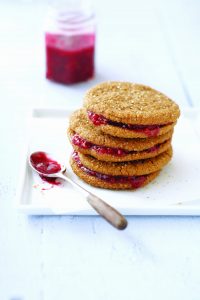
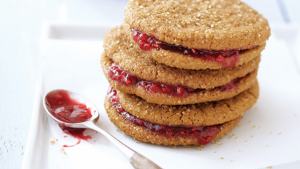
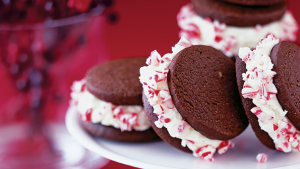
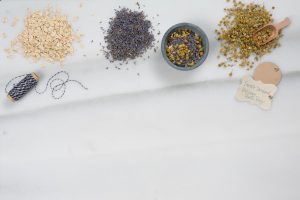
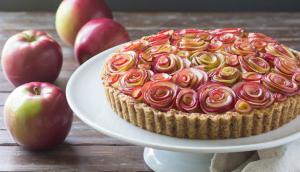
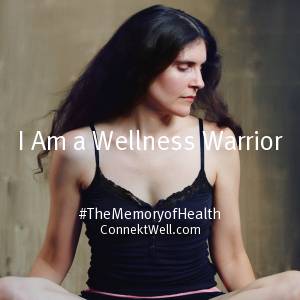
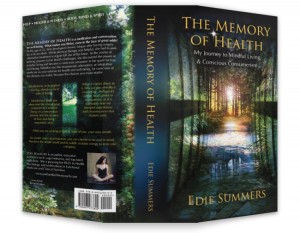
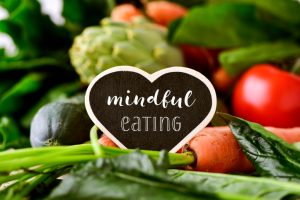



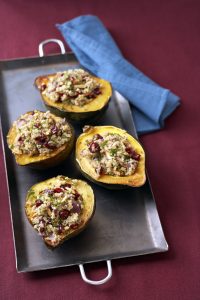
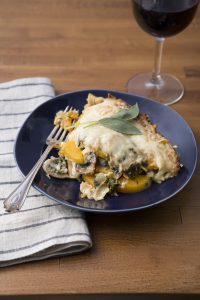








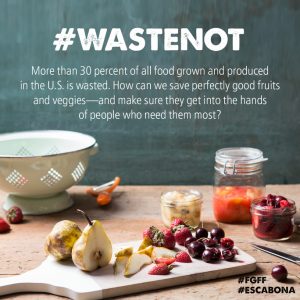
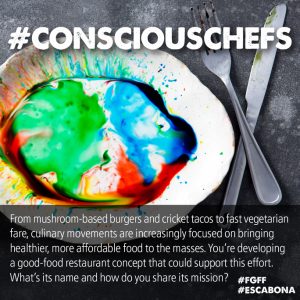

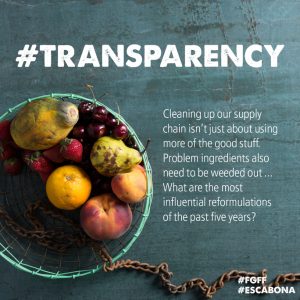
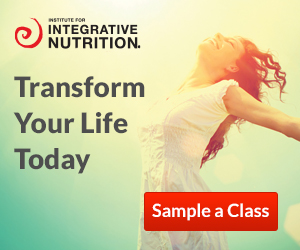

Recent Comments